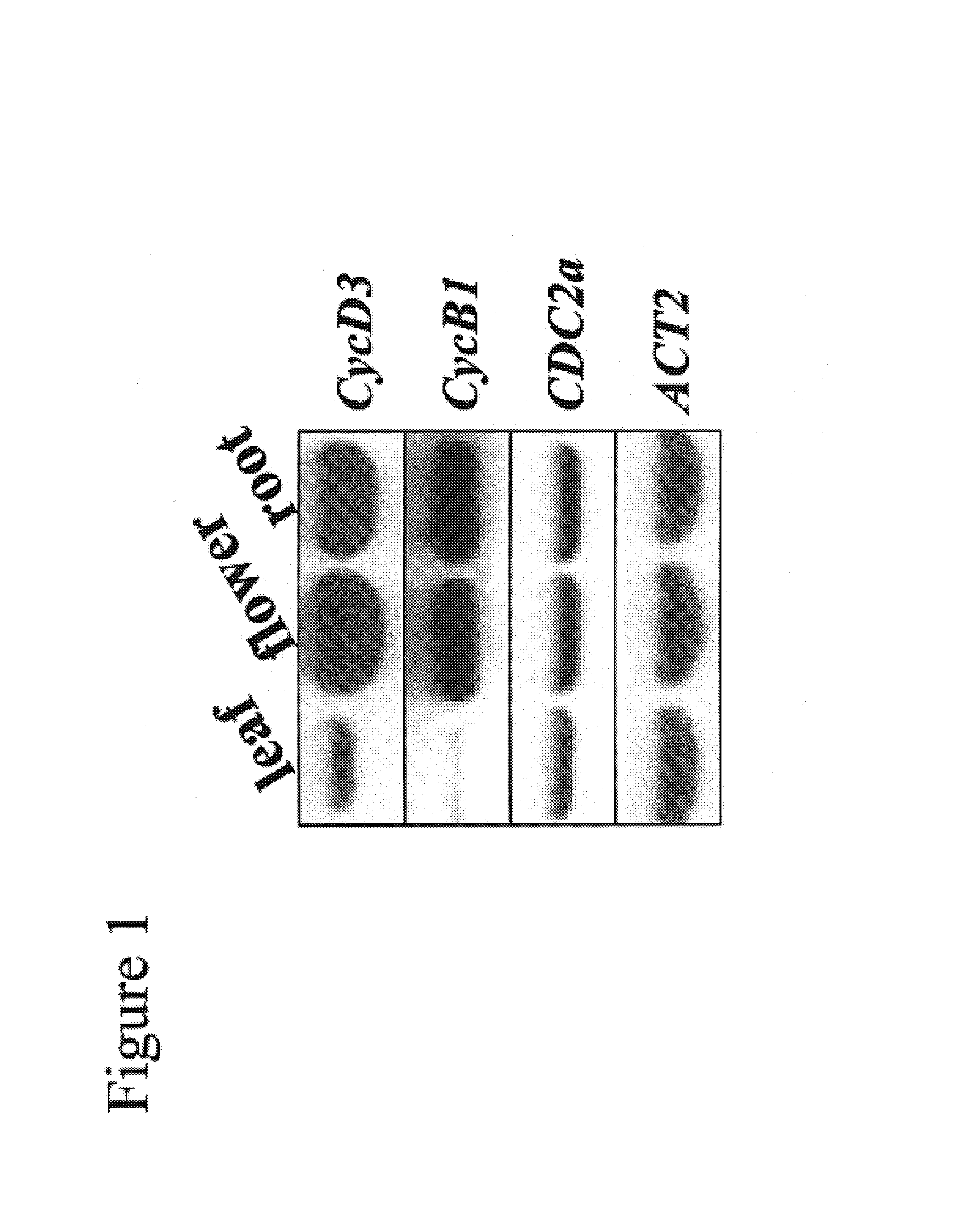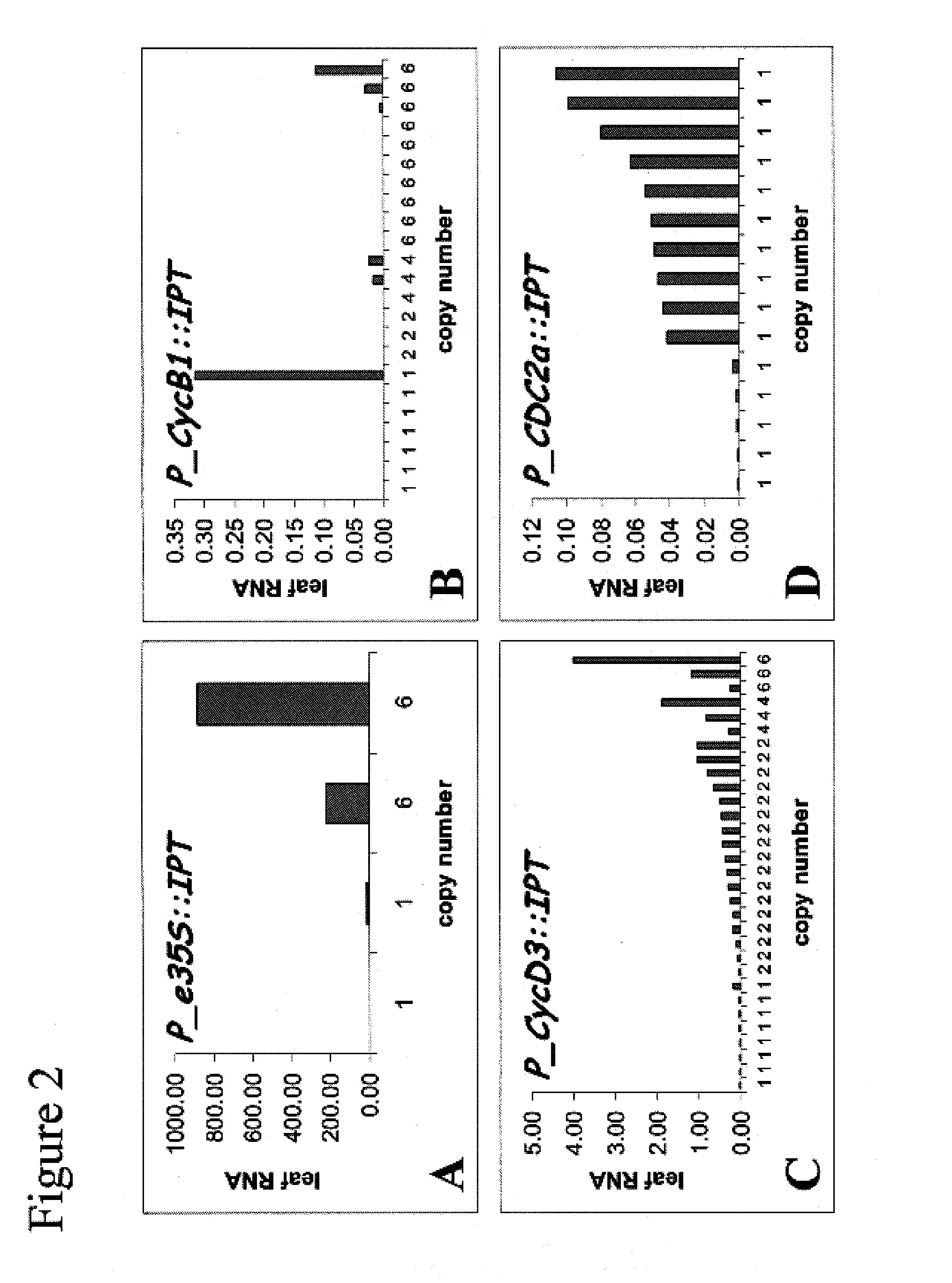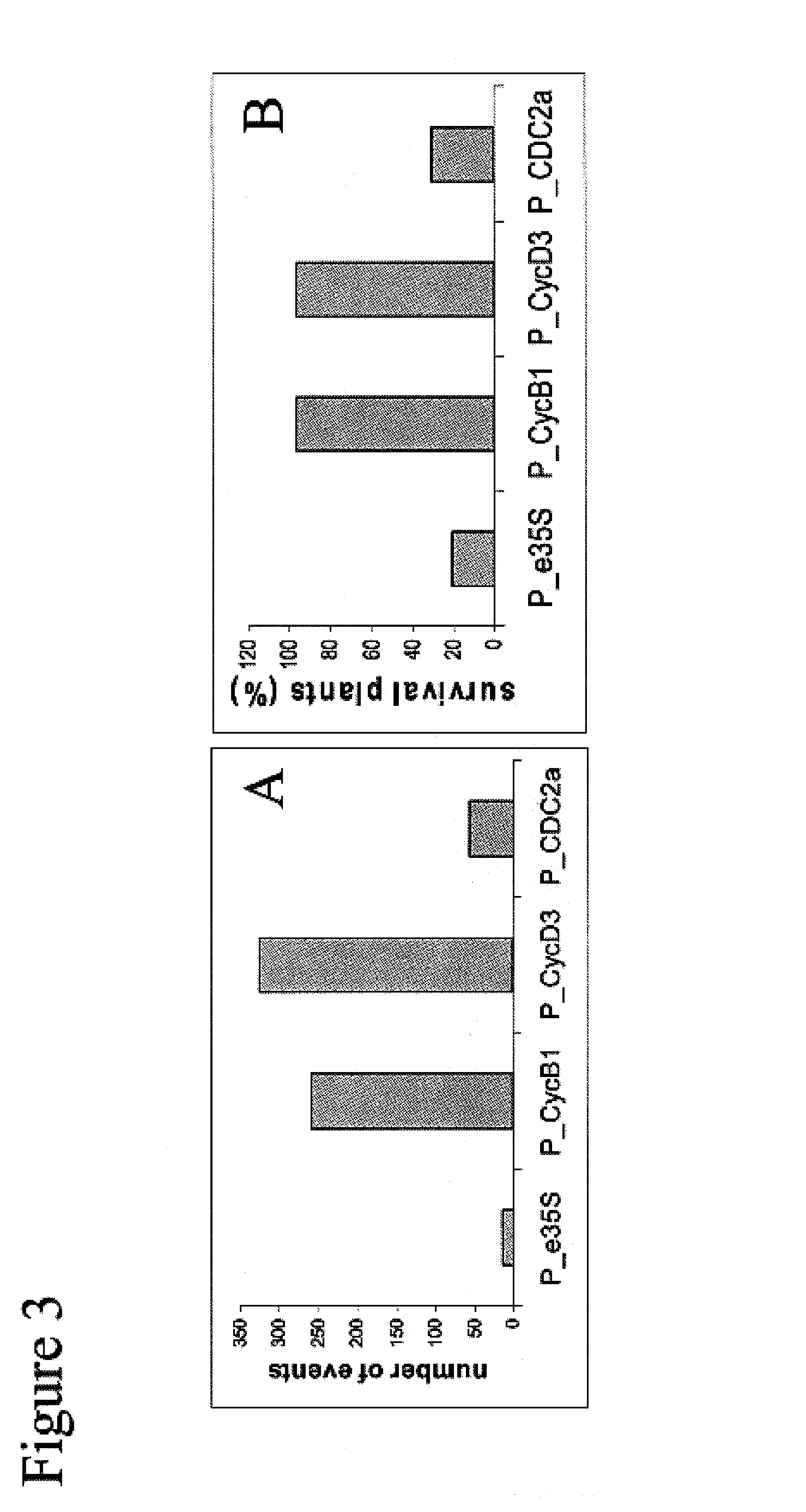Transgenic plants expressing cytokinin biosynthetic genes and methods of use therefor
a technology of cytokinin and biosynthetic genes, applied in the field of plant molecular biology, can solve the problems of deleterious pleiotrophs, difficult to develop transgenic plants with improved agronomic traits, and difficult to achieve deleterious pleiotrophs, and achieve the effect of improving yield related characteristics
- Summary
- Abstract
- Description
- Claims
- Application Information
AI Technical Summary
Benefits of technology
Problems solved by technology
Method used
Image
Examples
example 1
Cloning and Vector Construction
[0048]The IPT gene (SEQ ID NO: 1 and 2) of 720 bp from Agrobacterium tumefaciens was amplified by PCR from plasmid pMON38210, using two primers that introduced a NcoI site at the 5′ end and an EcoRI site at the 3′ end of the amplified gene. The two primer sequences are CGCGGCCCATGGATCTGCGTCTAATTTTCGGTCCAAC (Seq ID NO: 3) and CGGCGCGAATTCTAATACATTCCGAATGGATGACCTT (Seq ID NO: 4).
[0049]The promoter of Arabidopsis CycB1 (Seq ID NO: 5) was cloned by using the upstream DNA polynucleotide sequence of CycB1 from the genomic clone with Genbank number AL035601. Two primers were designed to amplify from the total genomic DNA the 1550 bp fragment immediately upstream from the ATG start codon, introducing a PacI site at the 5′ end and a NcoI site at the 3′ end. The two primer sequences are CGCGGCTTAATTAAGAGCAATAACAGTGTGTGAGGCATT (SEQ ID NO: 6) and CGGCGCCCATGGTCTTAGTGTTCTCTTCTCTTTCTCTC (SEQ ID NO: 7). To clone the promoter of Arabidopsis CycD3 (SEQ ID NO: 8), the u...
example 2
Arabidopsis Transformation
[0051]The constructed binary expression vectors from Example 1 were used to transform Arabidopsis thaliana, ecotype Columbia using an Agrobacterium mediated procedure. Transformants were selected on kanamycin MS plates and thirty two independent transformation events were transferred to potted soil in growth chamber and grown to maturity for seed harvest. Expression of the IPT transgene was monitored at the transcript level using Taqman analysis.
[0052]Plant Growth
[0053]Seeds of the transgenic plants were sowed in potted soil along with wild-type plants (controls), and were vernalized at 4° C. for three days before moving to a growth chamber. The plants were grown under the following conditions: at 22° C., 24 hours constant light with light intensity of 170-200 μm Einstein m−2s−1, and a humidity of 70%. Plants were also grown under short day conditions, with 10 hours of light period. Plants were fertilized twice a week using Peters 20-20-20 fertilizer (in ha...
example 3
Analysis of Gene Expression
[0054]RT-PCR Analysis
[0055]Total RNA was prepared from roots, rosette leaves and flowers of Arabidopsis plants using Trizol reagent from Life Technologies (Gibco BRL, Life Technologies, Gaithersburg, Md. U.S.A.). The RNA was then treated with DNAse and column purified. All samples were adjusted to same concentration based on spectrophotometer readings. 2.4 μg of total RNA was used to synthesize the first strand cDNA in a 20 μl reaction with SuperScript II-RT Kit (Life Technologies, Gaithersburg, Md.) according to the manufacture's procedure. An aliquot of 1 μl of the synthesized cDNA was used as template for PCR reaction (a total volume of 50 μl), using gene-specific primers. The reactions were limited to 20 cycles so the amplifications were still in linear range. The amplified PCR products were resolved on agarose gels and photographed.
[0056]Real-Time PCR (Taqman) Analysis
[0057]Two hole punches, or a piece of the youngest leaf tip approximately 1-cm long,...
PUM
| Property | Measurement | Unit |
|---|---|---|
| Tm | aaaaa | aaaaa |
| temperature | aaaaa | aaaaa |
| temperature | aaaaa | aaaaa |
Abstract
Description
Claims
Application Information
 Login to View More
Login to View More - R&D
- Intellectual Property
- Life Sciences
- Materials
- Tech Scout
- Unparalleled Data Quality
- Higher Quality Content
- 60% Fewer Hallucinations
Browse by: Latest US Patents, China's latest patents, Technical Efficacy Thesaurus, Application Domain, Technology Topic, Popular Technical Reports.
© 2025 PatSnap. All rights reserved.Legal|Privacy policy|Modern Slavery Act Transparency Statement|Sitemap|About US| Contact US: help@patsnap.com



